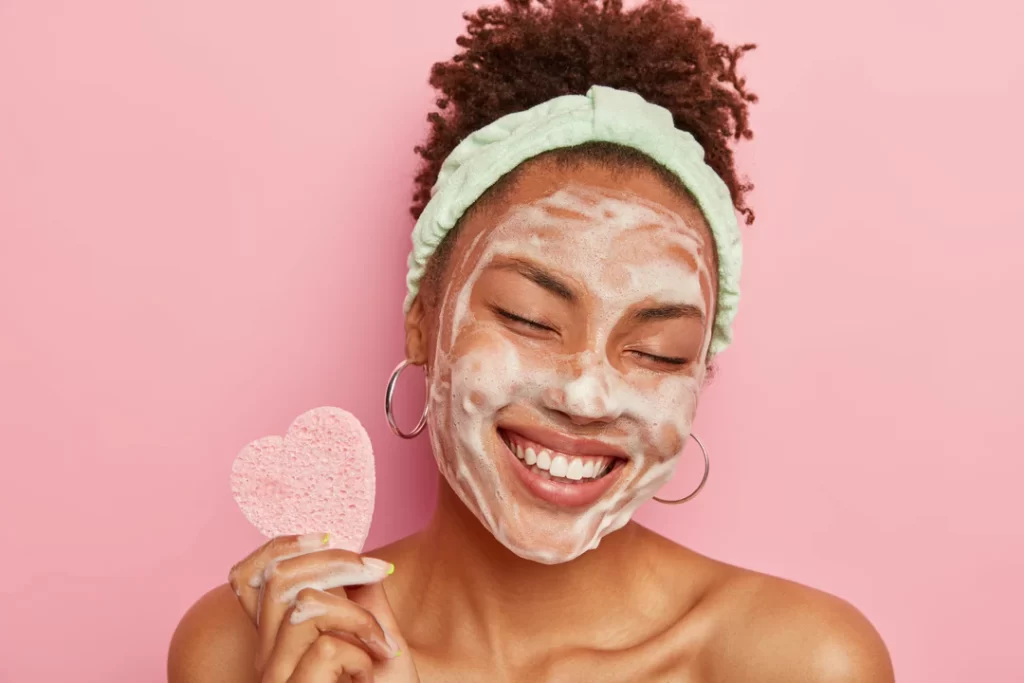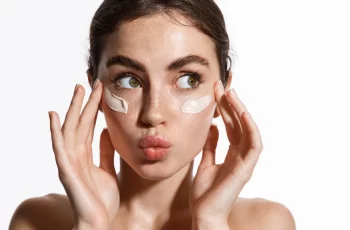
What Can You Not Mix with AHA and BHA?
If you don’t use an AHA or BHA in your daily skincare routine, chances are you have at least heard of this collection of chemical exfoliants before. Both groups of acids each deliver impressive and desirable benefits on the skin.
What are AHAs?
Alpha hydroxy acids (AHA) are a group of chemical exfoliants that work on the upper surface if the skin by ridding it of the build-up of dead skin cells, dirt, debris, bacteria, and other impurities which if left to sit on the skin will develop into such concerns as spots, acne, blemishes, and a flaky lack lustre complexion. The most common AHAs are glycolic acid and lactic acid which are formulated into many popular skincare products, like toners and serums. These are effective at also combating signs of ageing, such as fine lines, wrinkles ad well as areas of hyperpigmentation, dark spots, and sun damage.
AHAs molecular size is usually quite large meaning they are unable to penetrate the lower layers of the skin and ensure you avoid too much irritation.
What are BHAs?
Beta hydroxy acids (BHA) are the cousins of AHAs and generally perform similar exfoliating properties. The main difference is you’ll find BHAs are not as readily available in over-the-counter products such as AHAs, instead you’ll find they are used in professional treatments such as chemical peels. The most common BHA is salicylic acid, which like the other acids mentioned works at sloughing the skin of dead skin cell build-up and other impurities. Compared to AHAs however you’ll find that salicylic acid is oil-soluble with a small molecular size meaning it can reach deep into the pores and help unclog them of excess sebum, dirt, and bacteria.
Now that you’ve had a recap of what these clever acids do for the skin, let’s explore more and find out what can you not mix with AHAs and BHAs.
What should you not do after AHA BHA?
Some of the main skincare ingredients you should not apply to the skin after using AHA and BHA are the following.
Vitamin C
Retinol
Benzoyl peroxide
Physical exfoliating scrubs
This doesn’t mean you should not use these actives all together, but it just requires you to alternate the time of day you apply them. Ideally you would need to leave about 40 minutes in between applications as this will ensure the pH levels of the skin are rebalanced ready for any following products. Remember not to rush any introduction of new ingredients or products into your routine, especially if it is one that is working effectively for you. Ensure you opt for skincare products that complement each other and will help you reap the rewards of an effective routine.
What can I layer with AHA and BHA?
With both BHA and AHA performing exfoliation on the skin it is considered best to team them with hydrating and nourishing ingredients, such as hyaluronic acid, niacinamide, squalene, or glycerin. All of which aid moisture to the skin and help to calm and soothe after the exfoliating of the acids revealing fresh skin cells that often require a helping hand in keeping healthy and protected from exposure to free radicals, such as UV rays, pollution, and other environmental aggressors.
If you find yourself with any worries about layering active skin ingredients together, it’s best to perform a patch test for 24 hours. You can do this by applying a 10 pence size amount of product on the forearm, once the 24 hours have passed and there are no signs of irritation, you are able to apply the product to your face.
Can you use niacinamide after AHA BHA?
Yes, you can, but always ensure you apply it during the optimal time of day to avoid any unwanted irritation or reactions. By this I mean depending on the type of products that contain AHAs or BHAs will help you establish when in your routine you should apply niacinamide. The general skincare rule is to apply products from thinnest to thickest to avoid any physical barriers forming on the skin surface and preventing products to penetrate the skin. You’ll often find that niacinamide is formulated into serums or moisturisers which are applied to the skin during the later stages of your routine. This leaves enough time for you to use a toner enriched in an AHA, such as glycolic acid which will slough away dead skin cells before niacinamide helps the skin to regulate its sebum production and locks moisture into the protective barrier.
There is a completely dedicated blog post about mixing AHA and BHA with niacinamide over on The Beauty Insiders, so do check that out if you wanted to find out more.
Can you mix AHA and BHA with hyaluronic acid?
Absolutely, hyaluronic acid is one of the very few skin ingredients that can be teamed with almost every other active ingredient, even ones as potent as the BHA, salicylic acid. For optimal results and no signs of potential dryness caused by the AHA or BHA you’ll often find serum formulations contain both exfoliant and hyaluronic acid, this is ideal for getting the best of both worlds, but you are also able to use separate products to layer to achieve the same hydrating and skin reviving results.
If you wanted to find out more about the best way of layering hyaluronic acid with BHA, check out our dedicated blog post which goes into more detail.
There you have a little more information about what can you not mix with AHA and BHA, as complicated as it may feel at first, you’ll find that once you have a better understanding you are able to really notice an improvement in your complexion. With an established skincare routine, you’ll feel apprehensive about introducing any new products at the risk of causing the skin to flare-up, stick at it though and work slowly at introducing any new skin ingredients. You should also always consult with a doctor or dermatologist for the peace of mind you and your skin will love what you use.
Don’t forget to come and find us over on Instagram for daily skin expert tips, new products, and discounts.


